
George Joseph Herriman III was an American cartoonist best known for the comic strip Krazy Kat (1913–1944). More influential than popular, Krazy Kat had an appreciative audience among those in the arts. Gilbert Seldes' article "The Krazy Kat Who Walks by Himself" was the earliest example of a critic from the high arts giving serious attention to a comic strip. The Comics Journal placed the strip first on its list of the greatest comics of the 20th century. Herriman's work has been a primary influence on cartoonists such as Elzie C. Segar, Will Eisner, Charles M. Schulz, Robert Crumb, Art Spiegelman, Bill Watterson, and Chris Ware.
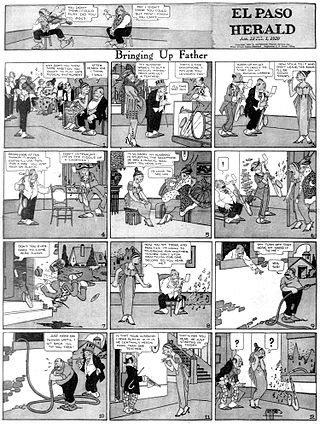
Bringing Up Father is an American comic strip created by cartoonist George McManus. Distributed by King Features Syndicate, it ran for 87 years, from January 2, 1913, to May 28, 2000.
M. Thomas Inge was an American academic. He was the Robert Emory Blackwell Professor of Humanities at Randolph–Macon College in Ashland, Virginia, where he taught, edited, and wrote about Southern literature and culture, American humor and comic art, film and animation, Asian literature, and William Faulkner.
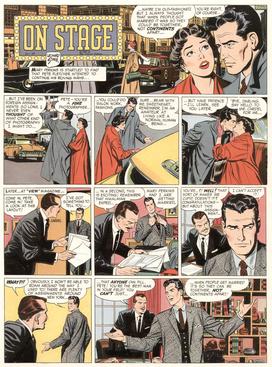
Mary Perkins, On Stage is an American newspaper comic strip by Leonard Starr for the Chicago Tribune-New York News Syndicate. It ran from February 10, 1957, to September 9, 1979, with the switch to the longer title in 1961. Some papers carried the strip under the shortened title Mary Perkins.
United Feature Syndicate (UFS) is a large American editorial column and comic strip newspaper syndication service based in the United States and established in 1919. Originally part of E. W. Scripps Company, it was part of United Media from 1978 to 2011, and is now a division of Andrews McMeel Syndication. United Features has syndicated many notable comic strips, including Peanuts, Garfield, Li'l Abner, Dilbert, Nancy, and Marmaduke.

The Funnies was the name of two American publications from Dell Publishing, the first of these a seminal 1920s precursor of comic books, and the second a standard 1930s comic book.
Star Hawks was a comic strip created by Ron Goulart and Gil Kane, first published on October 3, 1977, that ran through May 2, 1981. It was written through April 1979 by Goulart, followed by Archie Goodwin (1979-1980), Roger McKenzie (1980-1981) and Roger Stern. Comics veteran Gil Kane provided the artwork, with uncredited help from Ernie Colón and Howard Chaykin.

Krazy Kat is an American newspaper comic strip, by cartoonist George Herriman, which ran from 1913 to 1944. It first appeared in the New York Evening Journal, whose owner, William Randolph Hearst, was a major booster for the strip throughout its run. The characters had been introduced previously in a side strip with Herriman's earlier creation, The Dingbat Family. The phrase "Krazy Kat" originated there, said by the mouse by way of describing the cat. Set in a dreamlike portrayal of Herriman's vacation home of Coconino County, Arizona, KrazyKat's mixture of offbeat surrealism, innocent playfulness and poetic, idiosyncratic language has made it a favorite of comics aficionados and art critics for more than 80 years.
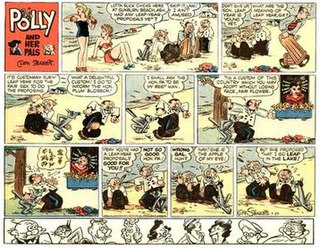
Polly and Her Pals is an American comic strip, created by cartoonist Cliff Sterrett, which ran from December 4, 1912, until December 7, 1958. It is regarded as one of the most graphically innovative strips of the 20th century. It debuted as Positive Polly on December 4, 1912, in William Randolph Hearst's newspapers, initially the New York Journal, and was later distributed by King Features Syndicate. The title changed to Polly and Her Pals on January 17, 1913.
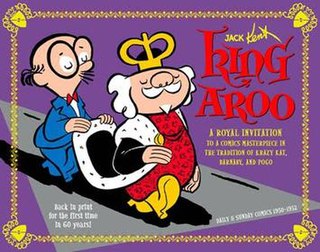
King Aroo is an American comic strip written and drawn by Jack Kent, which made its debut on November 13, 1950 and ran until June 19, 1965. The strip was distributed through the McClure Syndicate.
This is a timeline of significant events in comics in the 1910s.
This is a timeline of significant events in comics in the 1900s.
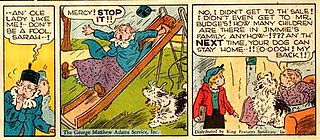
Cap Stubbs and Tippie is a syndicated newspaper comic strip created by the cartoonist Edwina Dumm that ran for 48 years, from August 21, 1918, to September 3, 1966. At times the title changed to Tippie & Cap Stubbs or Tippie.
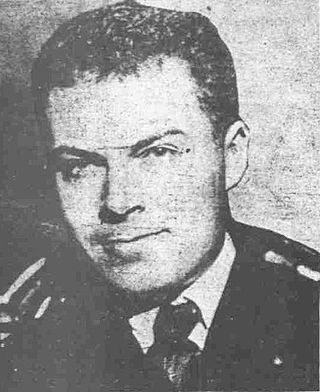
Clifford Sterrett was an American cartoonist best known as the creator of the comic strip Polly and Her Pals.
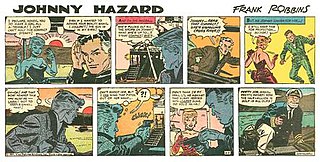
Johnny Hazard is an action-adventure comic strip created by cartoonist Frank Robbins for King Features Syndicate. It was published from June 5, 1944, until August 20, 1977, with separate storylines for the daily strip and the Sunday strip.
The Sunday Funnies is a publication reprinting vintage Sunday comic strips at a large size (16"x22") in color. The format is similar to that traditionally used by newspapers to publish color comics, yet instead of newsprint, it is printed on a quality, non-glossy, 60-pound offset stock for clarity and longevity. Featured are classic American comic strips from the late 19th century to the 1930s. The publication's title is taken from the generic label often used for the color comics sections of Sunday newspapers.
Frankie Doodle, originally called The Doodle Family, is an American comic strip that ran from April 23, 1934, to 1938. It was created by Ben Batsford.
Little Mary Mixup was an American comic strip drawn by Robert Moore Brinkerhoff, which ran from January 2, 1918, to February 2, 1957.
The Dingbat Family is a comic strip by American cartoonist George Herriman that ran from June 20, 1910, to January 4, 1916. It introduced Herriman's most famous pair of characters: Krazy Kat and Ignatz Mouse, who later featured in Herriman's best-known strip Krazy Kat (1913–1944).











